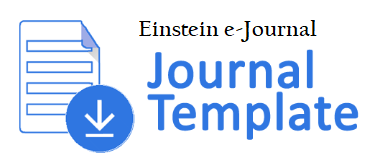CALCULATION OF PHONON PROPERTIES OF ASnI3 (A = Li, Na, OR Cs) PEROVSKITE IN CUBIC PHASE USING DENSITY FUNCTIONAL THEORY METHOD
DOI:
https://doi.org/10.24114/eins.v13i3.68235Abstract
Perovskite solar cells utilize perovskite material as an active component to convert sunlight into electrical energy. Perovskite is a compound with the crystal structure ABX₃, where A and B are cations, while X is an anion, generally a halide. Research continues to find perovskite materials with high energy conversion efficiency. This efficiency is closely related to the phonon nature structure of the material, which is analyzed using the Density Functional Theory (DFT) approach. In this study, the phonon properties of ASnI₃ cubic perovskite (with A = Li, Na, and Cs) were analyzed using Quantum ESPRESSO software. Various parameters, such as cut-off energy, number of k-points, and lattice constant were optimized to obtain the most accurate results. The optimization results provided phonon density of states (PHDOS) curves, phonon dispersion curves, and dielectric constants for each of the three perovskite types. The phonon dispersion curves in this study explain that cubic ASnI₃ (with A = Li, Na, and Cs) is an unstable material because some of the wave functions in the material are at negative (imaginary) values. For the dielectric constant calculation, each of perovskite shows that LiSnI₃ is 24.22, NaSnI₃ is 6.18 and CsSnI₃ is 10.61, and LiSnI3 24.22, NaSnI₃ of 6.18 and CsSnI₃ of 10.61. By this fact, we argue that material LiSnI3 has the best potential to be component of perovskite solar cell if one shift it to orthorhombic phase based on Huang & Lambrecht (2014) research (Huang & Lambrecht, 2014).Downloads
Published
How to Cite
Issue
Section
License
Copyright (c) 2025 Russell Ong, Dinda Fadhilah Nur Azimmi, Masthura Masthura

This work is licensed under a Creative Commons Attribution-NonCommercial 4.0 International License.
Authors who publish with this journal agree to the following terms:
- Authors retain copyright and grant the journal right of first publication with the work simultaneously licensed under a Creative Commons Attribution-Non Commercial 4.0 License (CC BY-NC) that allows others to share the work with an acknowledgement of the work's authorship and initial publication in this journal for non commercial purposes.
- Authors are able to enter into separate, additional contractual arrangements for the non-exclusive distribution of the journal's published version of the work (e.g., post it to an institutional repository or publish it in a book), with an acknowledgement of its initial publication in this journal.



